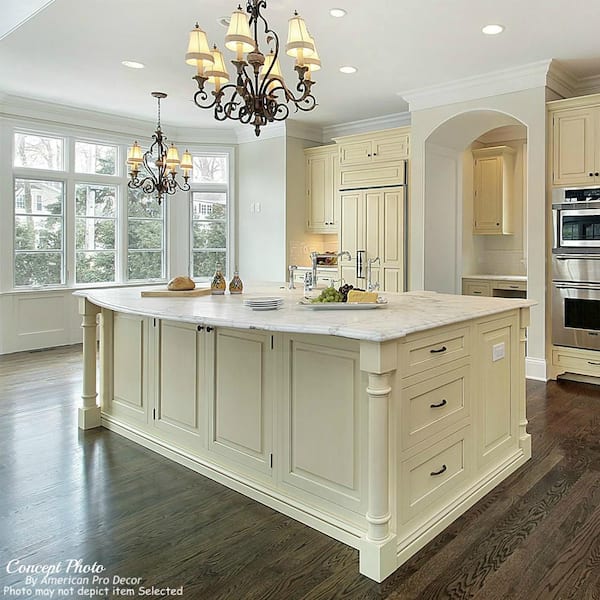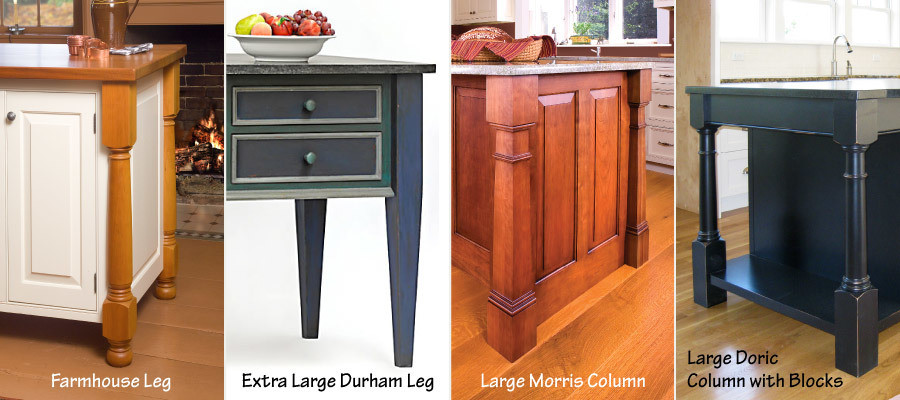Resilient Wooden Kitchen Island Legs for Your Home Remodel
Essential Tips for Choosing the Perfect Eating Table for Your Kitchen Area
Selecting the excellent table for your kitchen area is even more than simply an issue of taste; it requires a thorough understanding of your space and needs. Begin by measuring your available area to make sure ample clearance for movement. The shape of the table plays a critical role; while rectangular tables match larger locations, rounded ones foster affection, and extendable options supply flexibility. Material option is equally essential, with hardwoods supplying resilience and glass loaning a contemporary touch. The table should balance with your cooking area's aesthetics and fit your household conveniently. What other elements might affect this essential choice?
Measure Your Space
Choosing the ideal dining table begins with a careful assessment of your offered space. This fundamental step guarantees that the table not only fits comfortably within the space but additionally complements the overall format and functionality of your dining location. Begin by gauging the dimensions of the space, taking into consideration doorways, home windows, and any existing furniture. This will certainly help you establish the maximum allowable size for your table.
It is essential to leave adequate area for chairs to be pulled out and for individuals to relocate around the table without obstruction. A general guideline of thumb is to enable at the very least 36 inches of clearance from the edge of the table to the closest wall surface or item of furnishings.
In addition, believe concerning the number of individuals you usually captivate and whether you require extra area for guests. Going with an extendable table can supply versatility, enabling you to suit differing varieties of diners. By precisely determining your room, you lay the foundation for choosing a table that enhances both the aesthetics and performance of your eating location.
Select the Right Shape

On the various other hand, round tables are exceptional for smaller cooking areas or intimate celebrations, as they advertise discussion by allowing everyone to deal with each other. They also offer a sense of coziness and can fit well in tighter spaces as a result of their lack of sharp corners. Oval tables offer the very best of both globes, integrating the length of rectangular tables with the intimacy of round ones, making them flexible for numerous settings.
Square tables are one more option, particularly matched for square-shaped rooms. They produce a modern-day and balanced look, fostering an equivalent dining experience for all seated. They may be less practical for bigger events unless they come with extensions. Ultimately, the form you select should straighten with your room dimensions and way of life to guarantee both form and feature.
Product Considerations
When choosing an eating table, material considerations are extremely important in establishing the table's durability, maintenance needs, and overall aesthetic. Timber is a classic selection, using classic charm and toughness.
Glass-topped tables offer a modern, streamlined look and can make an area show up bigger because of their transparency. They need frequent web link cleaning to avoid finger prints and helpful site smudges. Furthermore, solidified glass is advised for its extra stamina and safety.

Finally, composite products like MDF (Medium-Density Fiber board) or plywood are affordable alternatives. These products can mimic the appearance of strong timber but might not use the exact same longevity. They are usually less complicated to clean however can be susceptible to water damages otherwise correctly sealed.
Inevitably, the choice of product need to line up with your kitchen area's style, your way of living needs, and your spending plan restraints. (kitchen island legs)
Seats Capacity and Convenience
Exactly how do you identify the ideal seating capacity and comfort for your table? This critical action includes assessing both the physical room available in your cooking area and your household's practical demands. Begin by determining your kitchen area to guarantee the table fits conveniently, allowing at the very least 36 inches of clearance around it for easy motion. Take into consideration the variety of people that typically dine with each other, as this will affect the table dimension. For a family of 4, a rectangular table of 48 inches long or a round table with a 48-inch diameter is typically sufficient.
Comfort is equally crucial. The elevation of the table must preferably be around 30 inches, giving a balanced ergonomic position for seated diners. Chairs need to have a seat height of 18 to 20 inches to guarantee a comfortable eating position. In addition, take into consideration the chair layout; upholstered seats and supportive back-rests can improve eating comfort significantly, particularly during prolonged meals.
Style and Aesthetic Appeal
Selecting a table that matches your design and aesthetics includes balancing personal preference with the existing design of your eating room. The table is often the centerpiece of the cooking area, and its layout needs to complement the overall style of the area. Whether your kitchen flaunts a modern, minimalist look or a rustic, farmhouse beauty, the table you select ought to integrate with these elements to produce a natural and welcoming environment.
Think about materials thoroughly; timber provides an ageless charm and can range from rich mahogany for a conventional want to lighter oak for a contemporary feel. Steel great post to read and glass tables, on the various other hand, can present a streamlined, commercial side to your kitchen area. Do not neglect the table's shape-- rectangle-shaped tables are timeless and flexible, while round and oblong options can cultivate an extra intimate eating experience.
Furthermore, pay attention to details and coatings. A distressed coating may add personality and heat, whereas a shiny surface can add to a tidy, contemporary aesthetic. Inevitably, your dining table should not only healthy effortlessly right into your kitchen's style but likewise show your individual style, elevating the area both functionally and visually.
Conclusion
To conclude, selecting the perfect dining table for a cooking area requires careful assessment of room, shape, product, seating ability, and aesthetic consistency. Guaranteeing a minimum clearance of 36 inches helps with comfortable motion, while the choice of form boosts spatial dynamics. Product selection effects resilience and layout, making it vital to line up with the cooking area's total aesthetic. Eventually, an appropriate table fosters a welcoming atmosphere and accommodates the household easily, therefore boosting the dining experience.

When selecting a dining table, product considerations are vital in determining the table's durability, upkeep requirements, and overall visual. For a household of four, a rectangular table of 48 inches long or a round table with a 48-inch size is generally adequate.
Don't neglect the table's shape-- rectangular tables are timeless and flexible, while round and oblong options can cultivate an extra intimate dining experience. kitchen island legs.